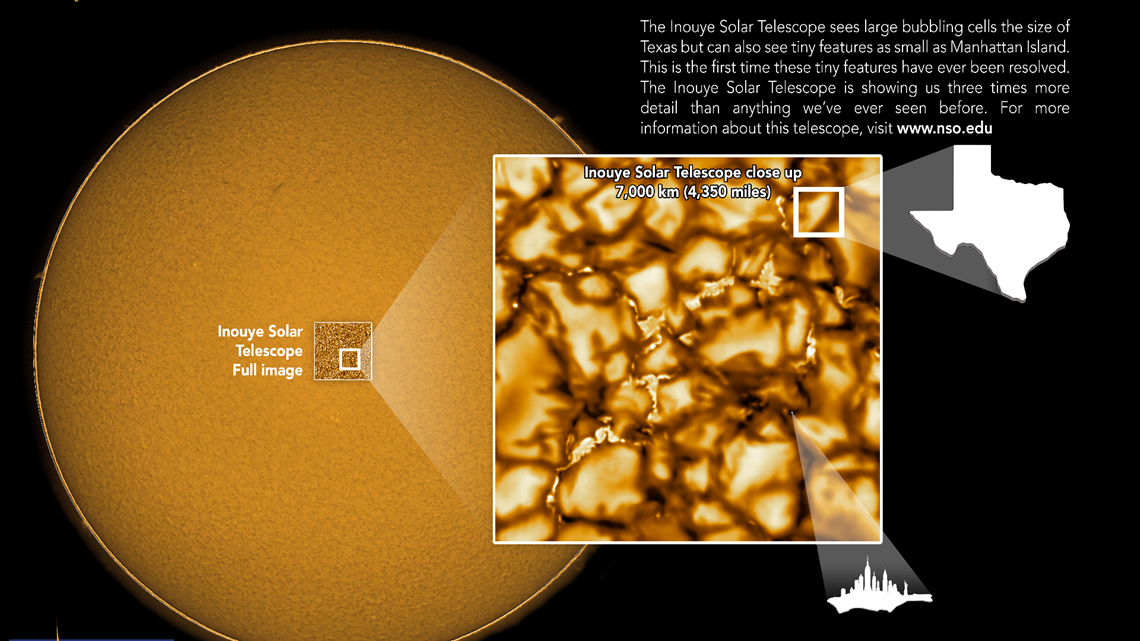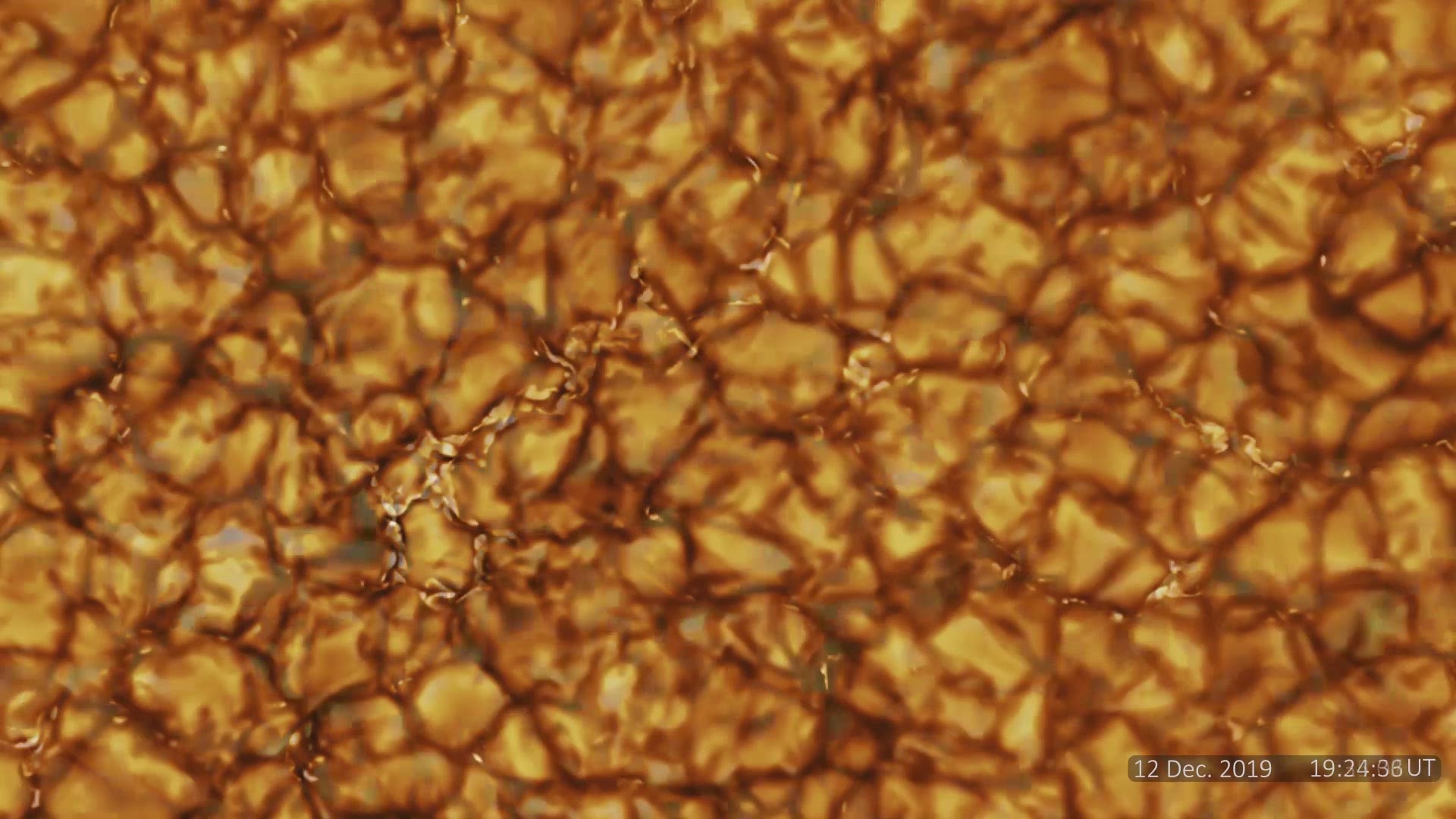WASHINGTON — A powerful solar telescope in Hawaii has captured never-before-seen footage of the surface of the sun.
The photos and videos were captured by the National Science Foundation's (NSF) Daniel K. Inouye Solar Telescope. The 4-meter (13-foot) telescope is installed at the summit of Haleakala, a volcano in Maui, Hawaii.
The images show a close-up view of the sun's surface. A pattern of turbulent "boiling" plasma can be seen.
The cell shaped boiling structures seen in the images are the result of "violent motions that transport heat from the inside of the sun to its surface," a press release from the NSF read. The "cells" seen in the image are each actually about the size of Texas.
“Since NSF began work on this ground-based telescope, we have eagerly awaited the first images,” said France Córdova, NSF director. “We can now share these images and videos, which are the most detailed of our Sun to date."
The solar telescope is also able to measure and characterize the sun's magnetic field in more detail than ever before. The new data will help scientists determine the causes of potentially harmful solar activity and better predict space weather.


“On Earth, we can predict if it is going to rain pretty much anywhere in the world very accurately, and space weather just isn’t there yet,” said Matt Mountain, president of the Association of Universities for Research in Astronomy, which manages the Inouye Solar Telescope.
“It’s all about the magnetic field,” said Thomas Rimmele, director of the Inouye Solar Telescope. “To unravel the Sun’s biggest mysteries, we have to not only be able to clearly see these tiny structures from 93 million miles away but very precisely measure their magnetic field strength and direction near the surface and trace the field as it extends out into the million-degree corona, the outer atmosphere of the Sun.”

